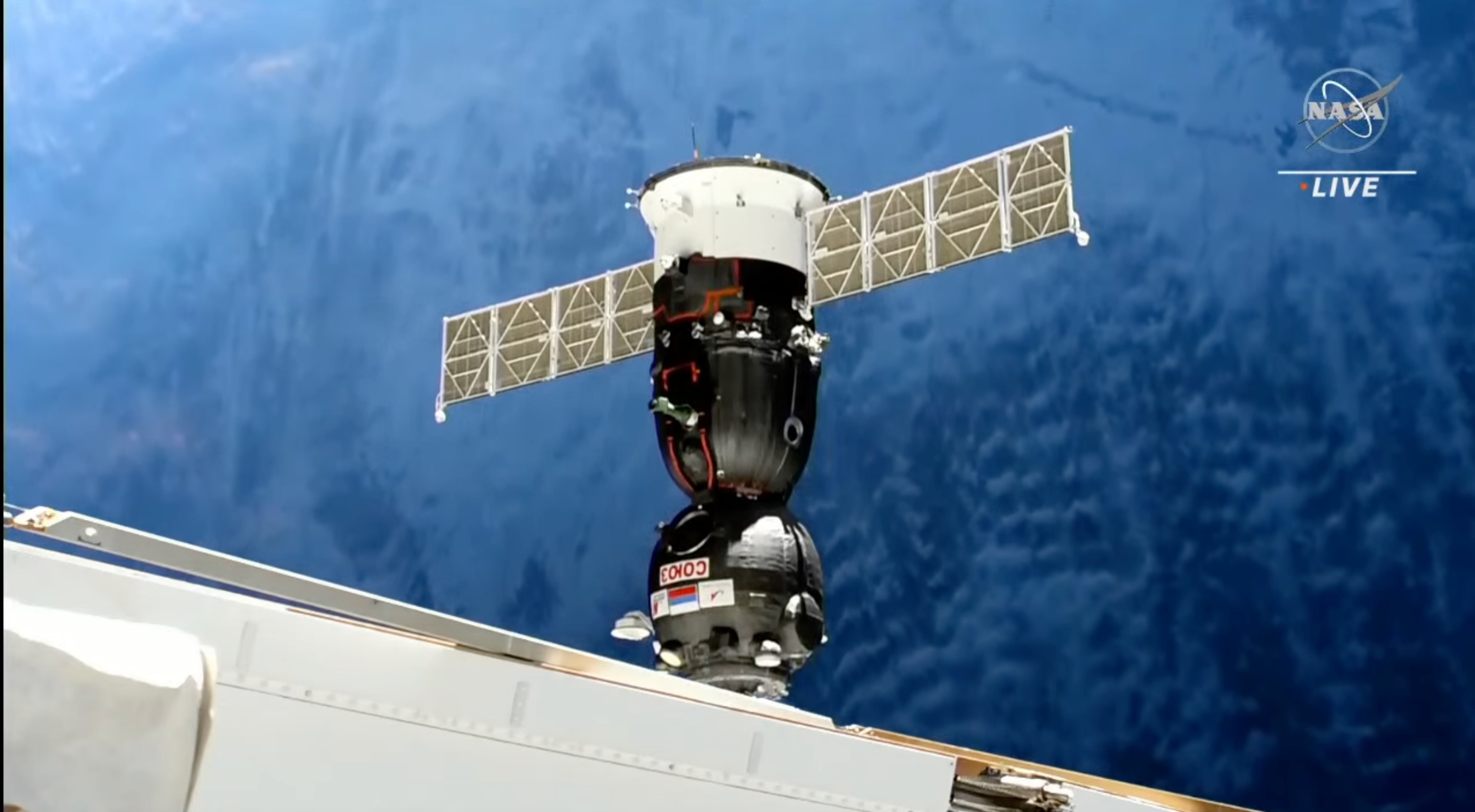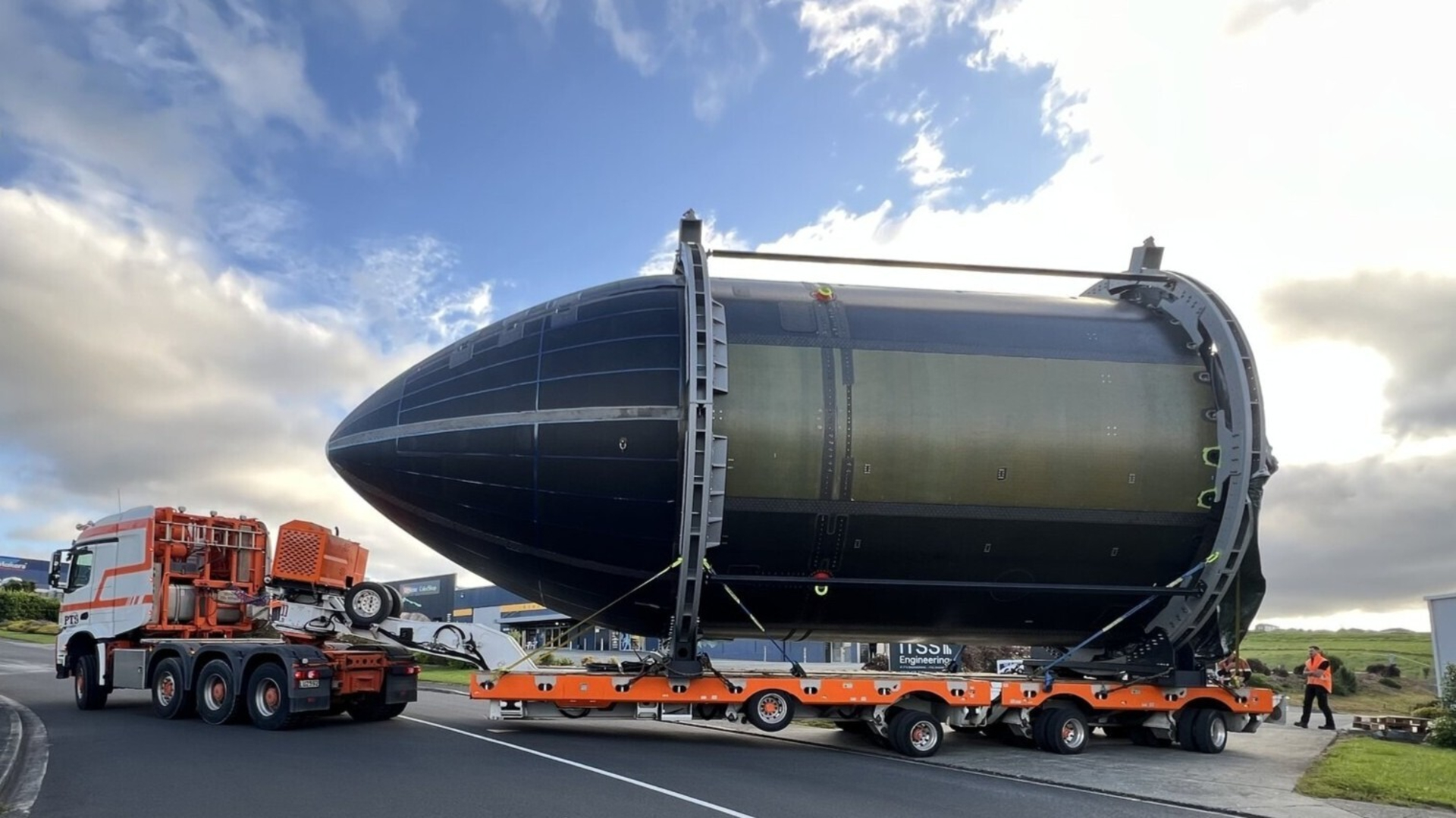Russia's replacement Soyuz spacecraft arrives at space station

A replacement Soyuz spacecraft for three International Space Station astronauts arrived at the orbiting complex as planned on Saturday night (Feb. 25).
The replacement Russian Soyuz spacecraft, called MS-23, docked with the International Space Station (ISS) Saturday at 7:58 p.m. EST (0058 GMT on Sunday, Feb. 26). The rendezvous occurred while the two spacecraft were flying 260 miles (418 kilometers) above northern Mongolia.
The uncrewed Soyuz MS-23, which launched on Thursday (Feb. 23) from Baikonur Cosmodrome in Kazakhstan, will serve as the new ride home for cosmonauts Sergey Prokopyev and Dmitry Petelin and NASA astronaut Frank Rubio. The trio's original ride, Soyuz MS-22, sprung a leak in mid December and lost all of its coolant.
Coincidentally, NASA is planning a launch of its own soon, with more ISS crew members: a SpaceX Crew Dragon spacecraft is expected to lift off on Monday (Feb. 27) at 1:45 a.m. EST (0645 GMT) with four people on board. That event will be carried live here at Space.com, via NASA Television.
Related: Russia releases 1st images of damage to leaky Soyuz spacecraft (photos)
Petelin, Prokopyev and Rubio had been without a nominal spacecraft since Dec. 14, when the Soyuz MS-22 sprang a coolant leak. Russia has been moving things around to get a new Soyuz available for the crew and has made several schedule changes this past week in response to recent events.
At first, MS-23 was supposed to launch in the spring with people on board, but early in 2023 the Russian federal space agency Roscosmos initially elected to accelerate its launch to Feb. 19 without people, to allow for three seats for the stuck MS-22 crew.
Breaking space news, the latest updates on rocket launches, skywatching events and more!
In case of an emergency requiring ISS evacuation, Roscosmos determined it would be feasible to put the two cosmonauts in the MS-22 craft (as two people on board heat up the spacecraft to a lesser degree than three). NASA said an extra seat for Rubio could be created on the SpaceX Crew-5 Dragon spacecraft, which has four seats already occupied by other ISS Expedition 69 crew members.
Then another Russian craft, a robotic Progress 82 freighter, sprang a coolant leak of its own on Feb. 11 and forced some changes in launching MS-23. At first, Roscosmos said it would delay the launch until March to allow for investigation time.
But the investigation showed that the two coolant leaks may have been unrelated micrometeoroid strikes, which prompted Roscosmos to reschedule MS-23 once again to launch Feb. 23.
Meanwhile, the MS-22/MS-23 crew is expected to spend a year in space, double their original time, to allow for yet another Soyuz with three people on board to serve as a relief crew. The crewed Soyuz, MS-24, will likely launch in September, according to the SpaceflightNow launch calendar.
Editor's note: This story was updated at 8:10 p.m. EST on Feb. 25 with news of the successful MS-23 docking.
Elizabeth Howell is the co-author of "Why Am I Taller?" (ECW Press, 2022; with Canadian astronaut Dave Williams), a book about space medicine. Follow her on Twitter @howellspace. Follow us on Twitter @Spacedotcom or Facebook.

Elizabeth Howell (she/her), Ph.D., was a staff writer in the spaceflight channel between 2022 and 2024 specializing in Canadian space news. She was contributing writer for Space.com for 10 years from 2012 to 2024. Elizabeth's reporting includes multiple exclusives with the White House, leading world coverage about a lost-and-found space tomato on the International Space Station, witnessing five human spaceflight launches on two continents, flying parabolic, working inside a spacesuit, and participating in a simulated Mars mission. Her latest book, "Why Am I Taller?" (ECW Press, 2022) is co-written with astronaut Dave Williams.


